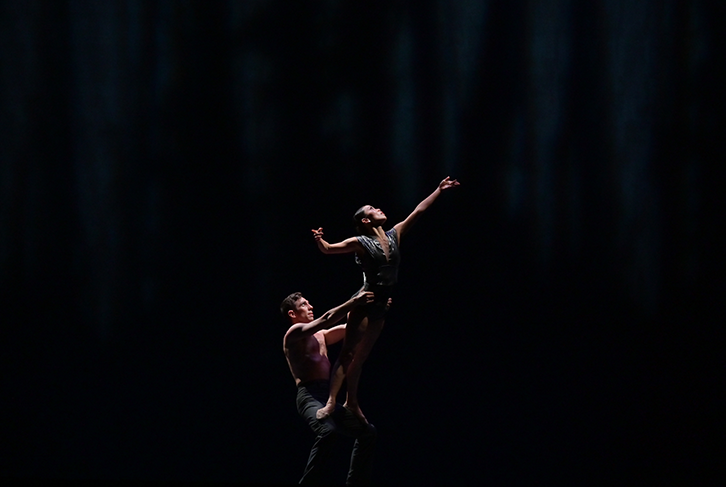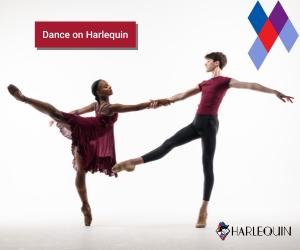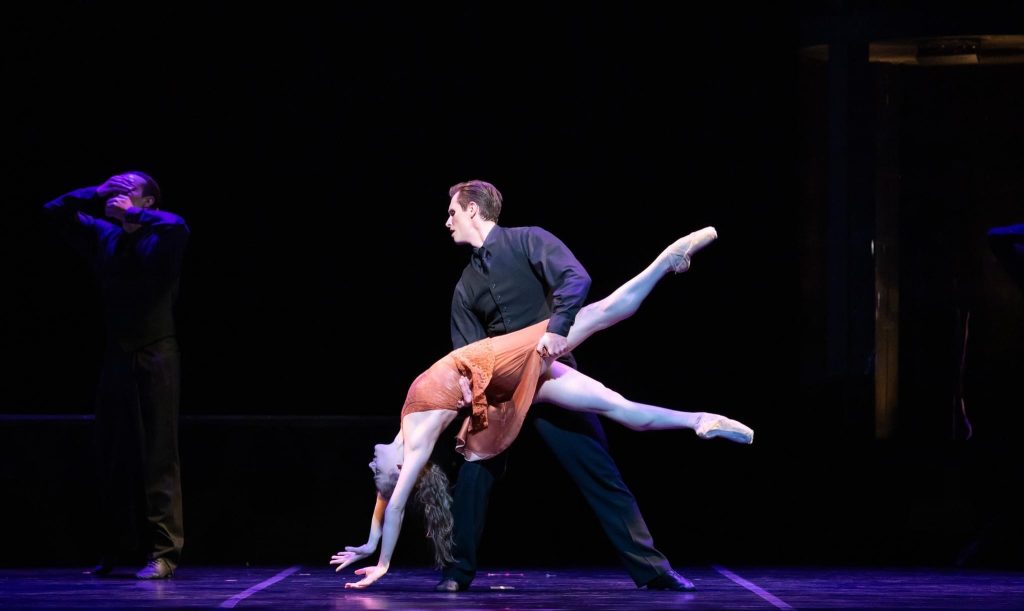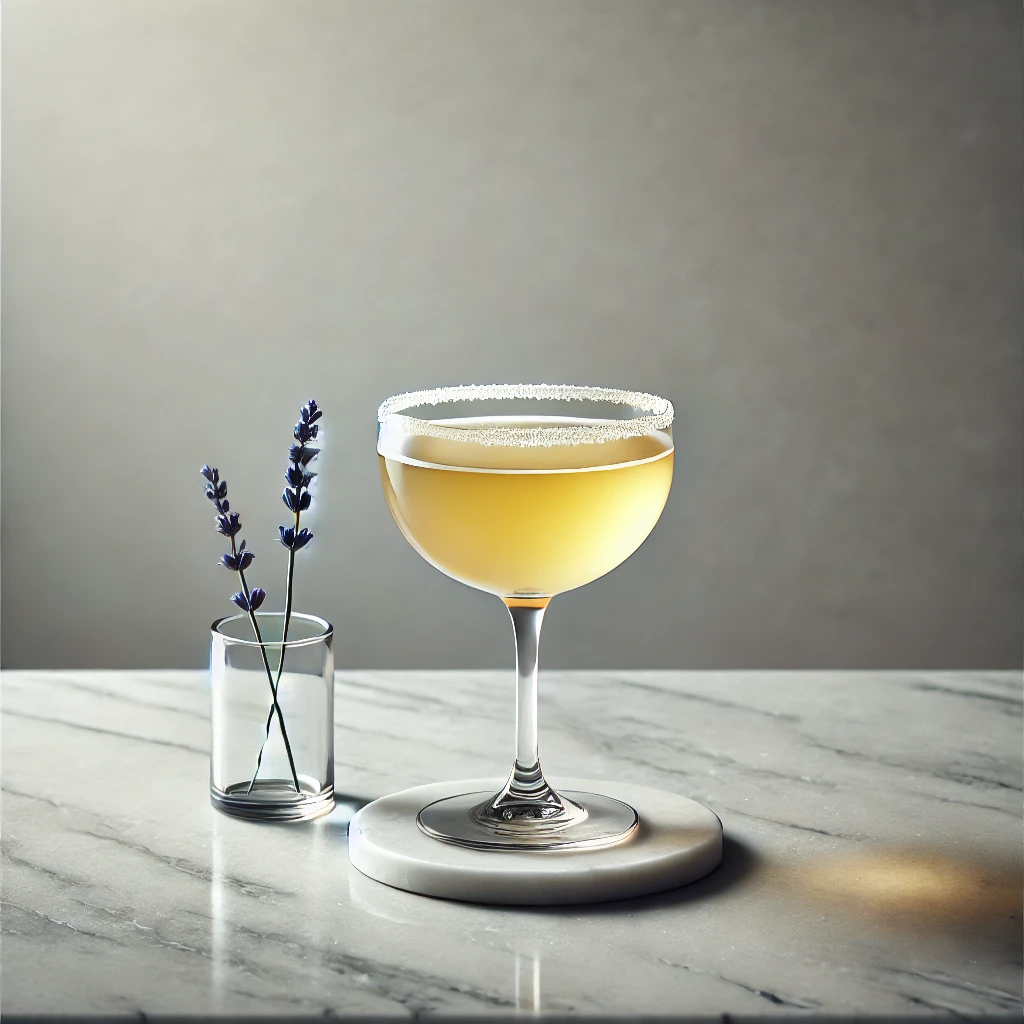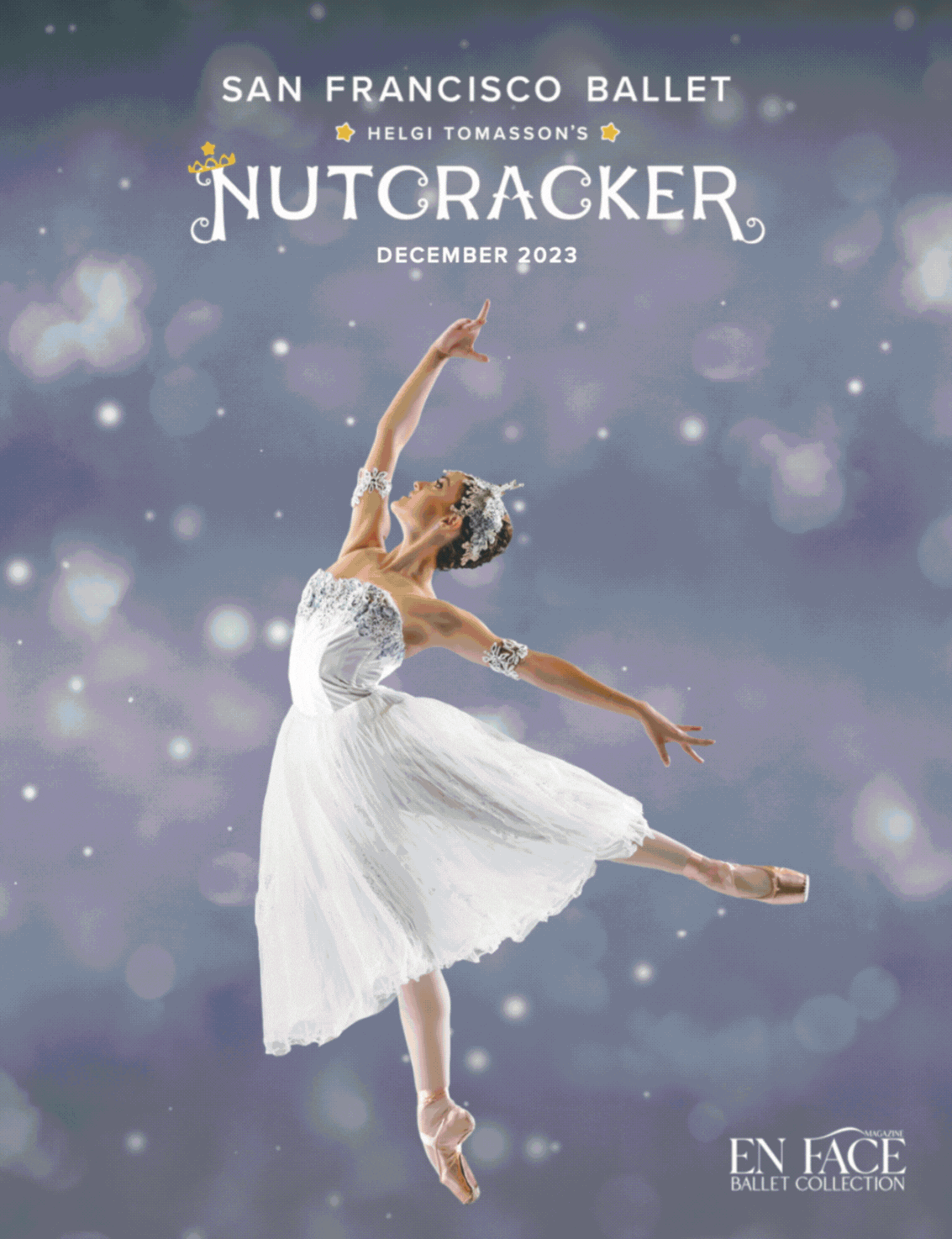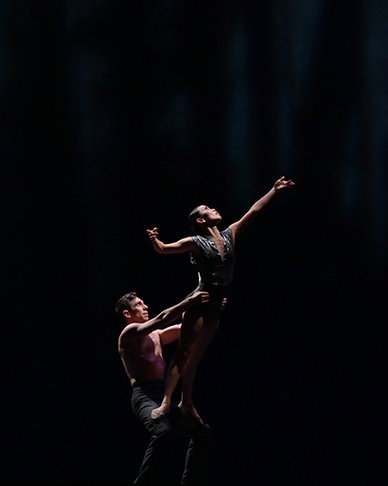
By Gavin Larsen
Dancers know from the very beginning that they will have two lives: the first comprises the highly focused—some call it tunnel vision— years of training and performing, and then comes Part 2, which begins the day after the curtain falls on their final performance.
Makino, who joined OBT 13 years ago after six seasons with Colorado Ballet, first tried choreography as a high school student in Japan. Although she’s always had an affinity for making things (“I love creating things from scratch, making something out of nothing,” she says), she didn’t experiment with it again until OBT’s then-artistic director, Kevin Irving, put a program of dancer-created works on the 2013 season. Makino got involved and loved it. She kept her eyes open for chances to do more, and as opportunities arose and interest in her work grew— she’s had at least one commission every year since— Makino started to feel her priorities change. “It used to be dancing that brought me joy and satisfaction— pushing it, going to the edge, sweating it out every day. But something inside me slowly shifted. Now it’s more about creating things, working with dancers, watching them bring their beauty, their shining light to the steps I create in a way that is comfortable in their bodies. That means more to me.”
With that realization and a sense of pride in her nearly 20 years of professional dancing, Makino is excited to focus fully on her next chapter as a choreographer. It’s fitting that she leaves OBT’s dancer roster by contributing a ballet to the final program of the 2022/23 season (she’ll choreograph again for the company in 2023/24). Wondering about the Made in Portland theme, she admits struggling at first with the question of what really does make Portland. She concluded, “It’s us. The people. We live here, so we ARE Portland. So whatever I make, since it will be by me and on these dancers, it will be about Portland.” In that spirit, The Rose gives each dancer a chance to shine, “to show off who they are,” and therefore reflects the milestone of Makino’s own retirement by elevating and honoring the dancing life. An emphasis on individuality and uniqueness is important to Makino, who finds inspiration in freshly composed musical compositions. For The Rose, she worked with frequent collaborator Bob Bush, who she says has an uncanny way of translating her feelings and ideas into music. “It’s amazing how much he understands,” she says. “I talk to him about what is in my head, what I’m thinking about creating, and he makes music that is so beautiful.”
As she considers her future as a dance maker, Makino has some goals— to continue collaborating with musicians, designers and artists who inspire her; to choreograph internationally— but no matter what, building a sense of trust and giving with any dancer she works with will be foundational. That’s what enables her, when she sits as an audience member to watch her ballets be performed, to slip out of her dancer identity and let those on stage add the final touch of magic. “I know that whatever happens, it will be okay. I have choreographed ON them, on their bodies, so that it feels comfortable to them. Then they are willing to express themselves, to go over the edge, and feel and enjoy each moment.”
“Class is my sanctuary,” says Christopher Kaiser. “It’s like my meditation. Everything I’m worried about just fades away because I’m focused on the technique and trying to improve.”
Chris, who retires this spring after seven seasons with OBT, is not moving either literally or figuratively far away from the sanctity of the studio. He will begin a twoyear Master of Dance program at the University of Washington in Seattle this fall, which will perfectly prepare and position him to help a new generation of dancers find that same reverence. The rigorous program (and application process—Chris is one of only five people accepted this year) will have him teaching and taking courses in a range of dance forms from ballet to contemporary. The goal is an eventual professorship. After many years in the relative consistency of a ballet company, this sounds disorienting. But looking back, Chris’ compass seems to have been pointing in such a direction all his life.
After “stumbling into ballet class” as a youngster who got roped into his sister’s production of The Nutcracker, Chris was hooked, captivated by the physicality of dancers like Baryshnikov in videos he watched over and over. “It was amazing to me, the tricks he could do,” Chris recalls. “As I got older, partnering really piqued my interest, like Nacho Duato’s style, very intricate and flowing. It was really like dance chose me.” Attending LA’s Colburn Academy only deepened his interest, leading him, at that point a self-described “bun head,” to Juilliard: “I was so out of my element because I’d just been training ballet my whole life,” he says. But the experience opened his eyes and his world, pushing him out of his comfort zone and changing the way he thought about dance. He graduated having found his voice as a contemporary dancer, which has served him well in the eclectic repertoire of both Alberta Ballet, where he danced for three years, and OBT. “Being able to create my own character in contemporary works made sense to me,” he explains. “It felt more natural to express myself that way. I’d been exposed to so many choreographers at Juilliard who urged me to try new things and be ‘weird,’ which I didn’t enjoy at first. But it helped me get comfortable taking risks.”
Being fully immersed in this new role as both student and developing teacher should help ease his transition from the stage, but Chris does still have pangs and doubts, as all dancers do at this juncture of life. As his final performance nears, those feelings are growing. “The thing I’m going to miss the most is performing,” he says. “I love being in the studio and rehearsing, but it’s a grind. But when the work is done and you can let go and share it with the audience… I’m really going to miss that.”
Why do people devote their lives to an art form like dance? What calls them to do it? Chris has a very simple answer. “Art is not meant to make you feel good, it’s meant to make you feel. So if you can’t get it out of your head, it’s done its job. And dance just makes me feel really, really good. I love sharing that with people.”

